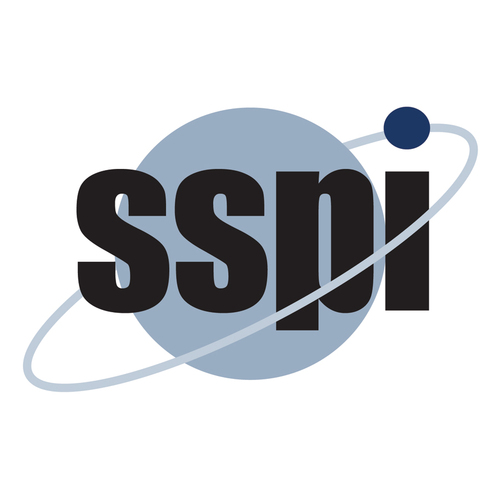
[SatNews] The Society of Satellite Professionals International (SSPI) has announced four new inductees for the 2015 Satellite Hall of Fame, to be honored on March 17 during SSPI’s annual Gala Benefit Dinner.
They will join more than 40 Hall of Fame members that include Dr. Arthur C. Clarke, Dr. Harold Rosen, Olof Lundberg, Eddy Hartenstein, Frederic d'Allest, Sidney Topol, Takayushi Yoshida, Mary Ann Elliott, Mary Frost, Peter Jackson, Dick Tauber, Susan Irwin and Robert Berry.
“We are privileged to honor a set of company founders and technology leaders who have transformed the business of launch, broadband Internet, pay TV and the efficiency and availability of satellite services,” said SSPI executive director Robert Bell. “At the same time, they have led the building of companies that are name brands in the business and whose best days are still ahead of them.”
The SSPI Satellite Hall of Fame was introduced in 1987 to recognize the enormous contributions of the visionaries and pioneers who have made possible the age of satellite communications—individuals who have devoted their careers to the advancement of technology and to helping build the political and commercial foundations of the industry.
The 2015 Hall of Fame Honorees:
Dirk Breynaert, Co-Founder and Chief Technology Officer, Newtec
-
Dirk Breynaert founded Newtec in 1985 with fellow engineer Jean-Marie Maes. For the company’s first ten years, it worked exclusively in R&D for the European Space Agency. In 1994, when the European satellite market was deregulated, Newtec seized the opportunity to begin developing its own products and focused its efforts on the new Digital Video Broadcast (DVB) standard. As company CEO, Dirk pushed for Newtec to develop and introduce innovations in DVB and also played a leadership role in the standards development process that led to DVB-S, DVB-S2, DVB-RCS and DVB-S2X. Thanks to those innovations, more than three billion people across the world have access to the latest content, which is being transmitted at greater volumes and at lower cost than ever before. Standardization made it possible for all TV set-top boxes and VSAT terminals to integrate cost-effective chipsets, which was critical to creating the flourishing satellite service markets of today. He and his team also combined existing technologies including DVB-S2 to create new modulation technologies, which power more than 130,000 satellite broadband terminals for SES and are bridging the digital divide in Russia, Africa, Latin America and the Philippines. Dirk surrendered the CEO role in 2006 to become the company’s chief technology officer, and has worked since then to break through the throughput barriers that have limited the satellite industry for decades. His biggest success to date was achieving 500 Mbps in tests with Eutelsat, Intelsat and Yahsat. Inside Newtec, he is appreciated as much for his humility as for his passion for technology. For “Mr dB,” as he is known inside the company, the future is without limits.
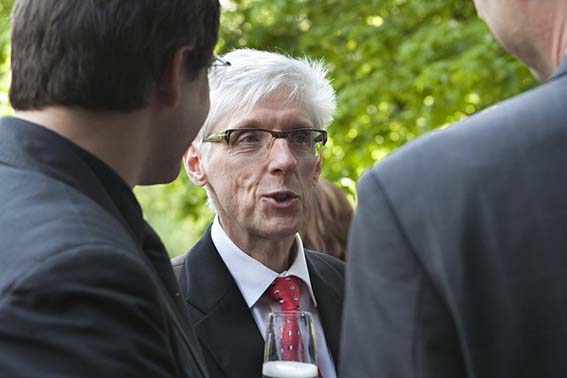
Dirk Breynaert
Mark Dankberg, Co-Founder, CEO and Chairman, ViaSat
-
As an engineer, entrepreneur, and business leader, Mark Dankberg has created an organization that pioneered a series of technologies with major impact on the evolution of defense, mobile and Internet communications. Mark co-founded ViaSat with Mark Miller and Steve Hart in 1986 with less than $25,000 in capital. His partners continue to serve as the company’s chief technical officers, while Mark became the company’s CEO. The company prospered initially as a contract engineering company for defense prime contractors. But from the beginning, ViaSat approached every contract as an opportunity to develop complete products. Its first success was in manufacturing specialized test equipment, but the portfolio rapidly expanded to include DAMA network, management and subscriber terminals, software-defined radios and modems, dynamic bandwidth resource allocation, applications for spread-spectrum Ku-band and RF and network technology for Ka-band broadband services for the Wildblue satellite service. Before going public in 1996, the company was named three times to the Inc. 500 list of the fastest-growing private companies. But nothing got the market’s attention more than the company’s announcement, in 2008, that it would put an all Ka-band 100 Gbps satellite into orbit to deliver Internet access to homes and small offices throughout the US. The financial markets called it a “bet the company” decision that ViaSat and its shareholders would come to regret. In 2011, ViaSat successfully launched ViaSat-1, the world’s highest capacity satellite, enabling it to begin offering its Exede-brand broadband services in 2012. Market reaction made it clear that the Ka-band Internet business case had been proven. By late 2014, the company had 657,000 subscribers for service plans that compete favorably with terrestrial, was supplying JetBlue and United with in-flight Wi-Fi, and led all other ISPs in delivering its advertised speeds in the FCC Measuring Broadband America report. In 2013, ViaSat announced that Boeing would begin construction of its second Ka-band spacecraft, designed to cover seven times the geographic area and offer twice the bandwidth economics advantage of ViaSat-1. By placing bold bets on a new frequency range and network architecture, Mark not only created an impressive new line of business for ViaSat, he opened the door for the global commercialization of Ka-band. With revenues now at about $1.4 billion, ViaSat continues to expand the boundaries of what is possible in satellite networking.
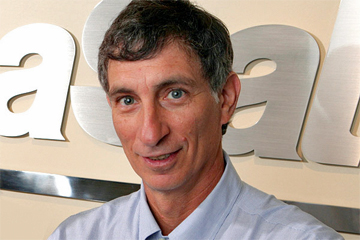
Mark Dankberg
David Thompson, Co-Founder, Chairman and CEO, Orbital Sciences Corporation
-
As a college student, David Thompson worked on the first Mars landing missions at the Jet Propulsion Laboratory and on Space Shuttle projects for NASA. After serving in engineering and management positions at NASA and Hughes, he founded a new company in 1982 with Scott Webster and Bruce Ferguson, whom he had met at Harvard Business School. Armed with business school studies and an initial round of financing, the three set out to plan what they expected to be the first product of their new Orbital Sciences Corporation. That product, the Transfer Orbit Stage for NASA, would not fly for another decade but, along the way, the company found itself focusing closer to home. Orbital developed a plan to orbit a fleet of low-Earth orbit communications satellites to provide thin-route data services for industrial, transportation, energy and government applications. When the company’s chief engineer, Dr. Antonio Elias, discovered that there was no cost-effective launch capability for such a fleet, he conceived what became the company’s signature product: the air-launched Pegasus rocket. In1980, three decades before Sir Richard Branson would proudly call Virgin Galactic the “first” air-launched orbital vehicle, Pegasus completed its inaugural mission and Orbital Sciences went public. It was the beginning of a dizzying set of innovations: the Orbcomm LEO communications and remote-sensing fleet, small-class GEO communications and earth observation satellites, scientific satellites for NASA, cargo resupply vehicles for the International Space Station – all in all, more than 1,000 satellites, launch vehicles and space systems. Today’s Orbital is a $1.3 billion company with more than 3,600 employees that has recently completed a merger to become Orbital ATK, a $5 billion aerospace and defense systems company. Leading the company from its earliest beginnings to the present, David has created enormous value while changing the face of the satellite industry.
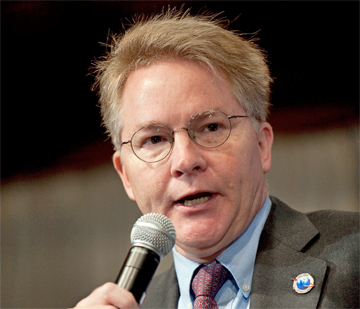
David Thompson
Dr. Xuyen T. Vuong, Vice President and Chief Scientist, Artel LLC
-
XT Vuong came to the United States from Vietnam on a USAID scholarship in the turbulent 1960s to study electrical engineering at California State University. It would turn out to be one of the better investments made by the US Government. After graduate studies, he entered the industry and began work on a series of leading-edge projects for government and private-sector customers, from Canada’s Earth exploration Radarsat, NASA’s commercial initiatives for LEO mission support, Hughes’ Ka-band Spaceway, and Motorola’s Ka-band Teledesic. In a 36-year career, he has made many fundamental contributions to the technology of the satellite industry. The Vuong-Vuong Techniques used to calculate satellite link availability during rainfall are at the core of virtually all software that develops link budgets. The same is true of software for predicting sun transit outages, which make use of the Vuong-Forsey Technique. The IM Microscope (XT co-developed with Dr. Arnstein) is a convenient and effective technique to analyze and synthesize nonlinearities such as satellite high power amplifiers and anti-jamming devices. He developed and contributed to the two RF power-sharing satellite payload technologies called the Matrix Amplifier and Routing System (MARS) and Active Transmit Phased Array (ATPA). The MARS was first implemented at L-Band AMSC/TMI’s MSAT and Inmarsat-3 and will be implemented at Ku-band on board a Eutesat satellite scheduled for launch in 2016. But XT has always been as ready to help close a deal as to build leading-edge technology. The sales and service team knows that, wherever XT happens to be in the world, he is just a phone call away when it is time to solve a customer problem. Citing his contribution to command and control communications, a US Defense Department customer calls him an “unsung hero” in detecting and solving unforeseen complex problems in support of the warfighter. In the fourteen years he has worked at Artel, the company has grown from a small business to a large business with substantial growth, and from managing no satellite capacity to nearly 6 GHz on 60 GEO satellites, making Artel the largest bandwidth provider to the Department of Defense and Department of Homeland Security. Artel’s CEO has just one word to describe XT’s contribution to the creation of a major player in the industry: “instrumental.”
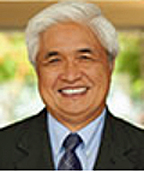
Dr. Xuyen T. Vuong
The Hall of Fame Ceremony willoccur at the 2015 Gala Benefit Dinner on March 17 at the Walter E. Washington Convention Center in Washington DC, where the Hall of Fame inductees will be presented with Ariane trophies, courtesy of Arianespace. Hall of Fame members are selected by a committee of industry leaders, chaired by Richard Wolf, Executive Vice President, The Switch and past Chairman of SSPI. Committee members include Dianne VanBeber of Intelsat, David Cavossa of Harris Caprock, Tim Jackson of Ateme, Thomas Van Den Driessche of Newtec and Dr. Denis Curtin.
The Society of Satellite Professionals International is a professional development society that promotes the growth of the industry by educating the public and end-users about the indispensable contributions of satellites to business, government and human welfare, and by connecting satellite professionals worldwide through education, knowledge-sharing and fostering professional relationships.
For more information, please visit http://www.sspi.org/.

